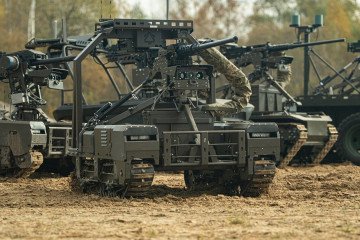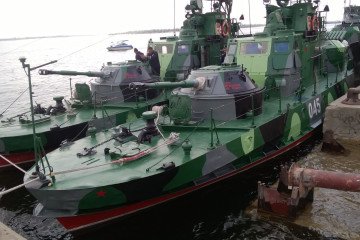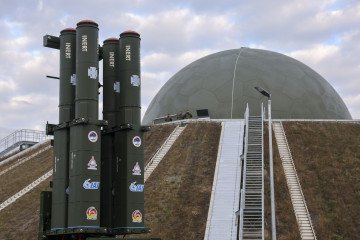- Category
- Latest news
Russia Reportedly Uses Zaporizhzhia Nuclear Power Plant As a Military Base and Ammo Storage

Russian forces continue to use the occupied Zaporizhzhia Nuclear Power Plant as a base for deploying military personnel and storing ammunition and explosives, according to a report from Ukraine's National Resistance Center on September 15.
Since being occupied by Russian forces in March 2022, the Zaporizhzhia Nuclear Power Plant, Europe's largest nuclear power station, has faced increased nuclear safety risks due to its proximity to the front lines of Russia's full-scale war on Ukraine.
The report comes less than two weeks after International Atomic Energy Agency (IAEA) Director Rafael Grossi visited the plant. The National Resistance Center criticized the IAEA for allegedly overlooking the presence of military forces and arms at the facility.
The facility reportedly houses 1,300 National Guard personnel, based on information from Ukrainian sources. Among those stationed there are the Akhmat-Grozny mobile special-purpose unit and the Agat rapid response unit.
The National Resistance center, managed by Ukraine's special forces, noted that some Russian troops may be disguising themselves in uniforms of the plant’s paramilitary guard instead of their official Russian National Guard uniforms.
Russian forces are storing small arms and artillery ammunition in the plant’s technical and basement areas to supply both the stationed troops and those at nearby positions. Additionally, more than 20 minefields have been set up around Enerhodar and the plant, stretching about 6.5 km (nearly 4 miles) to hinder Ukrainian forces from crossing the Dnipro River.
IAEA's Grossi conducted his fifth visit to the plant during the invasion on September 4, inspecting various sections including a pumping station and a nuclear fuel storage facility. Following the visit, Grossi reported that a cooling tower damaged by a fire on August 12 would need to be demolished, though he assured that the fire did not pose a risk to nuclear safety.
The National Resistance Center claimed that Russian authorities had planned Grossi’s visit route, which limited access to the western part of the turbine halls. The center also criticized the IAEA for recording the presence of military forces and munitions without addressing the implications for nuclear safety.





